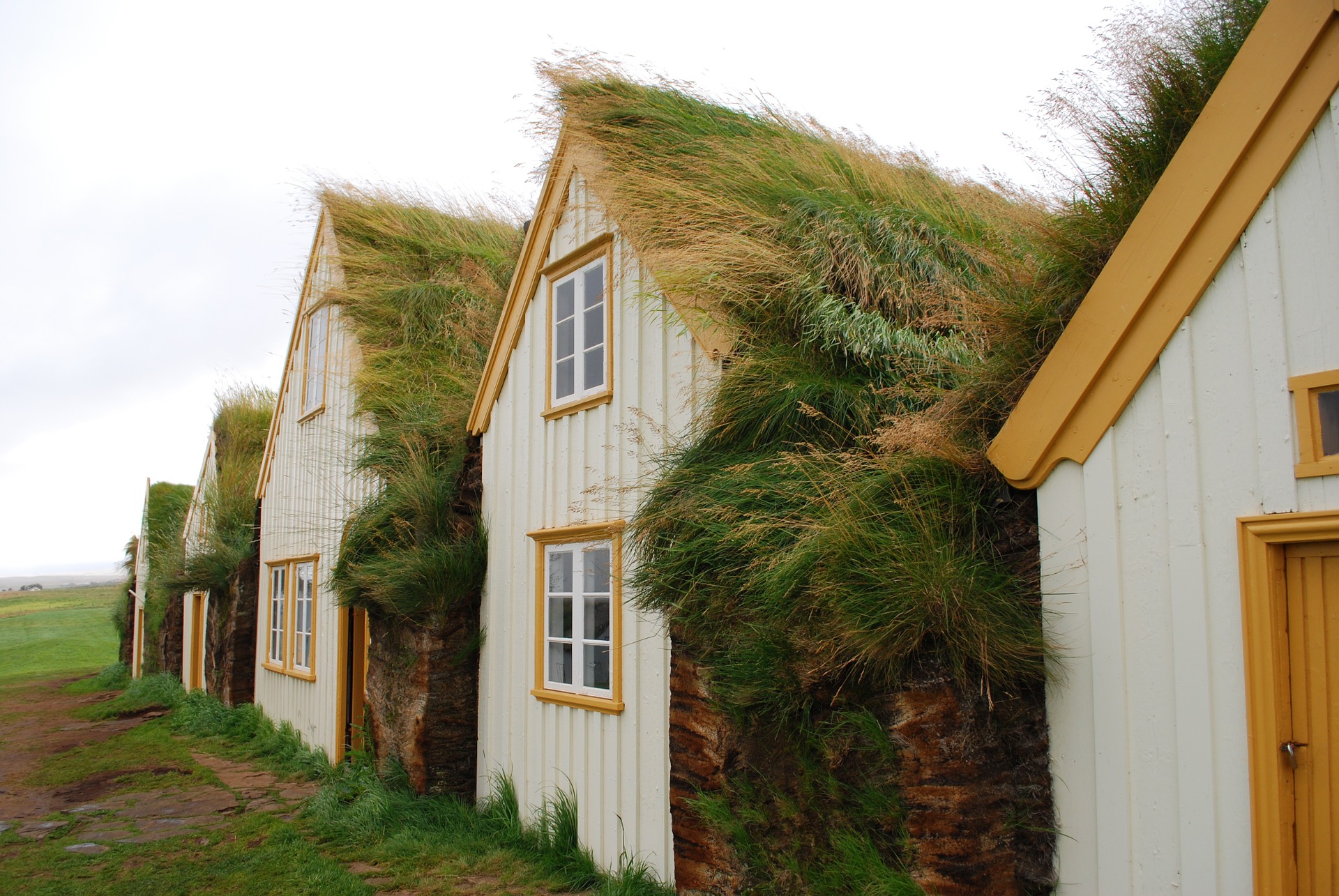The History Of The Turf Houses In The Faroe Islands And Iceland
The tradition of building houses with turf roofs in the Faroe Islands and Iceland dates back to the Viking Age. These architectural structures are the result of the climate on these islands, the requirements of the Norse society that settled them during the early Middle Ages, and last but not least of the local environmental resources.
At the time of the Norse settlement in both the Faroese archipelago and Iceland (in the Faroes sometime between the 9th century to the 10th century, while in Iceland as early as 874), these islands were not that forested, which is why the Scandinavian settlers needed to cope with the challenge of building durable homesteads mainly out of turf.

Turf-roofed house in Iceland (Skógar). Image source: Wikimedia Commons
In early medieval Norway, there were also turf roofed houses, and so the building process was not unknown to the Norse settlers who inhabited Iceland and the Faroe Islands in the Viking Age. However, because of the fact that roughly 30% of Iceland was covered by forests at the time of the arrival of the first Norwegian settlers — most of the wood being birch — they had to think inventively so as to preserve resources.

A picturesque turf house from the Faroe Islands. Image source: www.pixabay.com
Birch was as such saved for farming, and while oak was preferred in early medieval Scandinavia for the construction of the halls, in these remote islands it had to be turf, which was to be found in abundant amounts. Quite commonly, the turf houses in Iceland would have a foundation made entirely of flat stones, and upon it a wooden frame would hold the burden of the turf on the roof (which could also contain some grass).
The only additional use of wood in these constructions would be focused on the door, which was often decorative. The door led to the hall where, usually, a great fire was lit. The floor could have been made of either earth, stone or wood, evidently depending on the purpose of the structure.

Burstabær style turf houses at the Glaumbær Museum in Iceland. Image source: www.pixabay.com
Some of the traditional Icelandic turf houses were submitted to UNESCO as World Heritage Sites in 2011. In the Faroe Islands, the Roykstovan farmhouse located in the very small village of Kirkjubøur, on the Streymoy island, is Europe’s oldest inhabited wooden house.
Documentation sources and external links:
- Turf Houses in the Viking Age on www.hurstwic.org
- The Turf House Tradition on www.whc.unesco.org (in English)
- Icelandic turf houses are old-school green with a Viking twist on www.treehugger.com
- Keldur turf house – the oldest house in Iceland? on www.guidetoiceland.is
- The turf roofed Roykstovan farmhouse at Kirkjubour, Faroe Islands on www.naturalhomes.org
- Architecture in the Faroe Islands on www.faroeislands.fo
- Norse settlement in the Faroe Islands on www.wikipedia.org (in English)
- Settlement of Iceland on www.wikipedia.org (in English)
- Icelandic turf house on www.wikipedia.org (in English)




Wonderful history of early civilizations!!!
i’m glad you liked the article, dear Daphne! You’re most welcome and thank you very much for your readership! 🙂
Really interesting , would like to know more about them, when they were first settled and by whom. Did the Vikings have anything to do with this kind of building?
They constructed longhouses and lived in them which are very similar to the turf houses. Their dimensions differ though coupled with some architectural elements. That is to the best of my knowledge. I hope this comment clarifies your question to some extent. Have a great day! 🙂